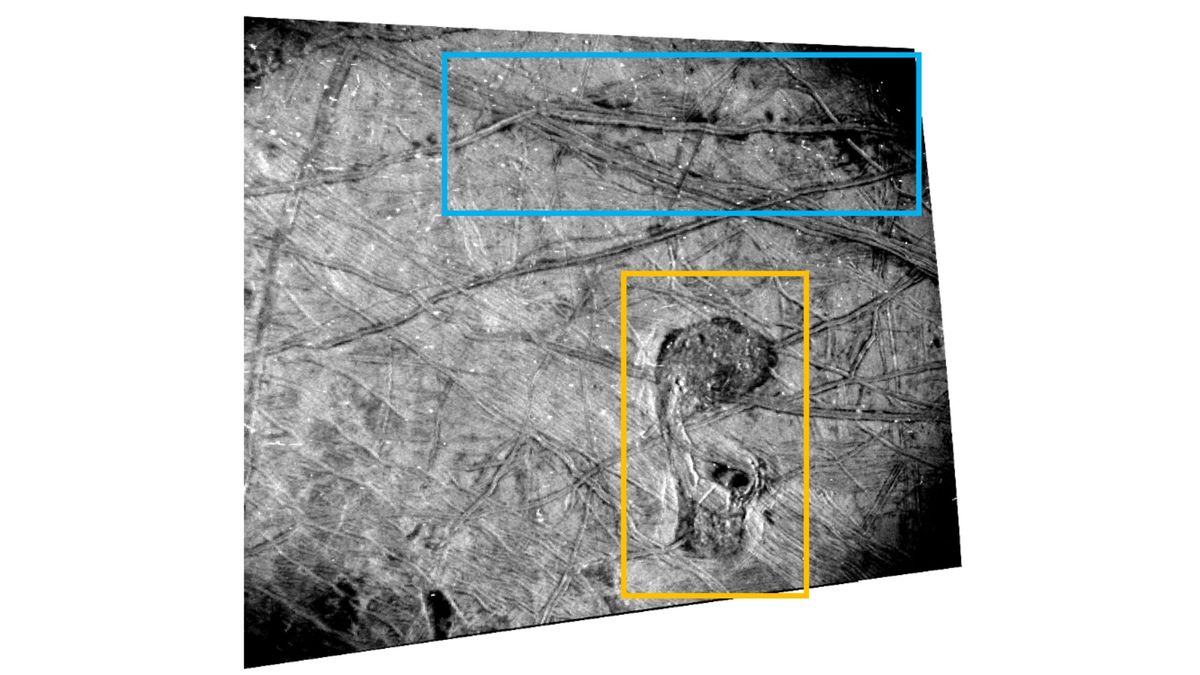What it is: Europa, Jupiter’s fourth-largest moon.
Where it is: About 417,000 miles (671,000 kilometers) from Jupiter and 500 million miles (805 million km) from the sun.
When it was shared: May 19, 2024.
Why it’s so special: Slightly smaller than Earth’s moon, Europa is more like a planet. It has a magnetic field, a tenuous oxygen atmosphere and a liquid iron core. It also has an icy shell 11 miles (18 km) thick that hides a salty ocean beneath.
Does that salty ocean bubble up through the ice? Yes, suggests a newly published image of Europa returned to Earth by NASA’s Juno spacecraft, which has been orbiting Jupiter since 2016.
Juno’s ultra-sensitive Stellar Reference Unit instrument snapped an image during a close flyby on September 29, 2022, when the spacecraft passed within just 220 miles (355 km) of Europa’s ice shell. It was one of the first high-resolution images of Europa since NASA’s Galileo spacecraft passed by in 2000.
Related: NASA reveals ‘glass-smooth lake of cooling lava’ on surface of Jupiter’s moon Io
The black and white image — taken of Europa’s night side when it was lit only with light reflected by Jupiter — shows a feature nicknamed “the Platypus” (in a yellow box). Measuring about 23 miles by 42 miles (37 km by 67 km), this “chaos terrain” contains hummocks, ridges, ice blocks and dark reddish-brown material. It’s the youngest feature in the region imaged — and, scientists suspect, it’s where Europa’s ice shell allows pockets of saltwater from the moon’s subterranean ocean to pool.
About 31 miles (50 km) above “The Platypus” is a double ridge running east-west (blue box) with possible stains around it. It’s thought these stains could be deposits from plumes of saltwater rising up to the surface from Europa’s ocean.
Juno’s close flyby also saw four visible-light images of Europa taken by JunoCam, which show that the icy crusts at the north and south poles of the moon are not where they once were. This suggests that Europa’s icy shell is free-floating, moving about the moon.
Juno’s mission will end in 2025, but two more missions are bound for Europa. NASA’s Europa Clipper will launch later this year and arrive in 2030. Meanwhile, the European Space Agency’s slower Juice (Jupiter Icy Moons Explorer) launched in 2023 and will arrive in 2031 to tour three of Jupiter’s moons: Ganymede, Callisto and Europa.

Dr. Thomas Hughes is a UK-based scientist and science communicator who makes complex topics accessible to readers. His articles explore breakthroughs in various scientific disciplines, from space exploration to cutting-edge research.








